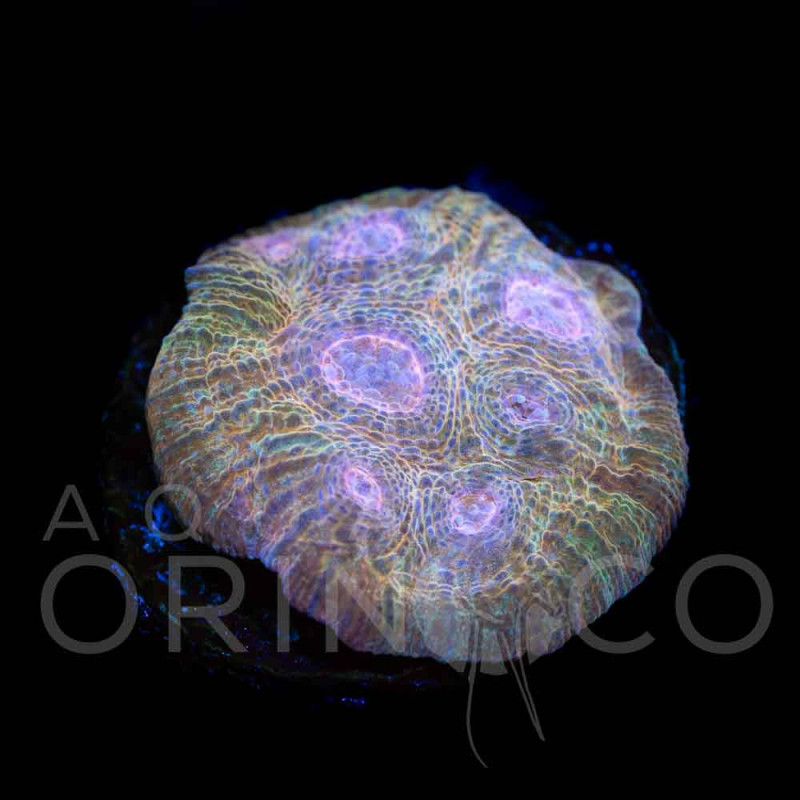More info
Unique piece – "WYSIWYG"!
What You See Is What You Get
Echinophyllia sp.
When people first get into the reef aquarium hobby, they often ask about beautiful yet manageable corals. A great option, especially for intermediate hobbyists, is the Echinophyllia, also known as "chalice coral".
There are three main reasons why Echinophyllia is such a popular choice. First, it offers stunning visual appeal. With vibrant colors ranging from neon green to intense red — often with contrasting centers or glowing edges — these colonies look like true gems under blue lighting. It's not uncommon to find specimens with psychedelic patterns or incredible fluorescence under actinic light.
Second, Echinophyllia grows relatively slowly and in a controlled manner, making it ideal for smaller tanks or carefully designed aquascapes. Unlike fast-growing corals, it doesn’t take over your tank, which is great for maintaining balance in your layout.
Third, although not as bulletproof as corallimorphs like Discosoma, Echinophyllia is still a fairly tolerant coral, as long as stable water parameters are maintained. With a proper care routine and appropriate lighting, it thrives and can live for many years, growing beautifully.
Lighting
Echinophyllia prefers moderate lighting but can adapt to a range of light levels. Under medium light (50–150 PAR), it tends to show its most vibrant colors. However, in strong lighting, some species may begin to pale or experience tissue recession.
Always increase lighting gradually and monitor the coral closely. Overexposure can lead to bleaching or uneven tissue growth. Too much light is often more harmful than too little.

Low light |
Low light is between 30 – 50 PAR per unit area |

Medium light |
Medium light is between 50 – 150 PAR per unit area |

High light |
High light is above 150 PAR per unit area |
Water Flow
In terms of water movement, Echinophyllia prefers low to moderate flow. Too much flow can damage the fleshy tissue, especially around the growing edges. Gentle current helps remove debris without causing irritation.
Also, low flow allows better polyp extension and helps with feeding by keeping food particles in place.
Feeding
Echinophyllia is photosynthetic thanks to its zooxanthellae, but it also benefits from target feeding. Foods like reef roids, phytoplankton, or finely minced meaty foods can be offered directly using a pipette or syringe.
With low flow during feeding, the polyps extend well and capture food easily. Adding amino acids and trace supplements also helps enhance growth and coloration.

Even if not directly fed, Echinophyllia can absorb dissolved amino acids from the water column. This is an easy and effective way to nourish the coral, especially when light or feeding is limited.
Habitat
Echinophyllia species are found throughout the Indo-Pacific, including regions like Indonesia, Fiji, Papua New Guinea, and the Great Barrier Reef. In nature, they grow over rocky substrates in calm, low-sediment environments, which reflects their preferences in reef tanks.
